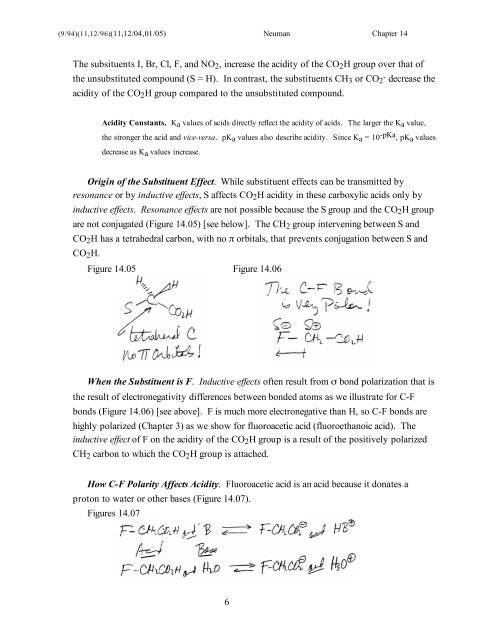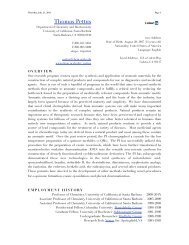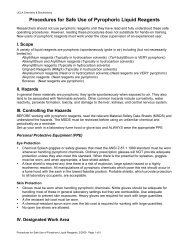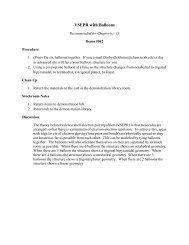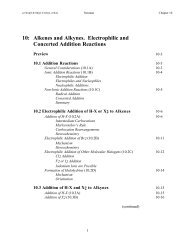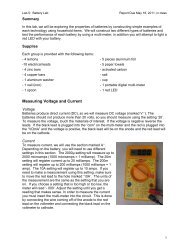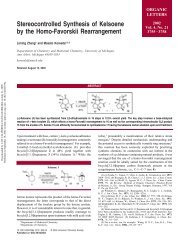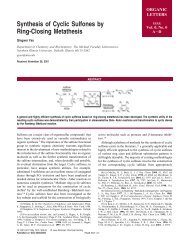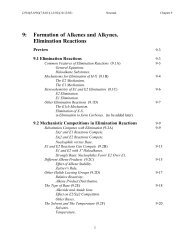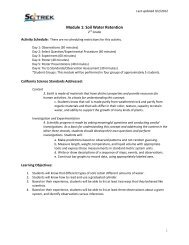14: Substituent Effects
14: Substituent Effects
14: Substituent Effects
You also want an ePaper? Increase the reach of your titles
YUMPU automatically turns print PDFs into web optimized ePapers that Google loves.
(9/94)(11,12/96)(11,12/04,01/05) Neuman Chapter <strong>14</strong><br />
The subsituents I, Br, Cl, F, and NO2, increase the acidity of the CO2H group over that of<br />
the unsubstituted compound (S = H). In contrast, the substituents CH3 or CO2 - decrease the<br />
acidity of the CO2H group compared to the unsubstituted compound.<br />
Acidity Constants. Ka values of acids directly reflect the acidity of acids. The larger the Ka value,<br />
the stronger the acid and vice-versa. pKa values also describe acidity. Since Ka = 10 -pKa , pKa values<br />
decrease as Ka values increase.<br />
Origin of the <strong>Substituent</strong> Effect. While substituent effects can be transmitted by<br />
resonance or by inductive effects, S affects CO2H acidity in these carboxylic acids only by<br />
inductive effects. Resonance effects are not possible because the S group and the CO2H group<br />
are not conjugated (Figure <strong>14</strong>.05) [see below]. The CH2 group intervening between S and<br />
CO2H has a tetrahedral carbon, with no π orbitals, that prevents conjugation between S and<br />
CO2H.<br />
Figure <strong>14</strong>.05 Figure <strong>14</strong>.06<br />
When the <strong>Substituent</strong> is F. Inductive effects often result from σ bond polarization that is<br />
the result of electronegativity differences between bonded atoms as we illustrate for C-F<br />
bonds (Figure <strong>14</strong>.06) [see above]. F is much more electronegative than H, so C-F bonds are<br />
highly polarized (Chapter 3) as we show for fluoroacetic acid (fluoroethanoic acid). The<br />
inductive effect of F on the acidity of the CO2H group is a result of the positively polarized<br />
CH2 carbon to which the CO2H group is attached.<br />
How C-F Polarity Affects Acidity. Fluoroacetic acid is an acid because it donates a<br />
proton to water or other bases (Figure <strong>14</strong>.07).<br />
Figures <strong>14</strong>.07<br />
6


